XEOMIN is manufactured with purity in mind.
Upper Limb Spasticity in Pediatrics
(excluding spasticity caused by cerebral palsy)
XEOMIN for Upper Limb Spasticity
XEOMIN for upper limb spasticity, excluding spasticity caused by cerebral palsy, in pediatrics

In children with upper limb spasticity, there is an imbalance of signals from the brain to the muscles, which causes stiffness and spasms. This can lead to abnormal arm or hand positions, uncomfortable movement, and pain.1
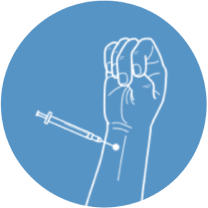
XEOMIN is injected into muscles to help interfere with these signals. This helps decrease muscle stiffness and improve your child’s ability to function using the affected muscles.2

Some stiffness and spasms may still occur, but in most patients less severely.
Images are for illustration purposes only. Individual results may vary.
XEOMIN helps improve
upper limb spasticity
symptoms
In clinical studies, XEOMIN improved muscle tone and resulted in functional
improvements 4 weeks after initiation of treatment2*
86%
Of patients treated at 8 Units/kg experienced a 1-point change or greater on the Ashworth Scale2
71%
Of patients treated at 2 Units/kg experienced a 1-point change or greater on the Ashworth Scale2
1.7
Mean improvement at Week 4 in GICS score for patients treated at 8 Units/kg2

XEOMIN provided sustained, long-term improvements in muscle tone for all upper limb muscle groups over 56 weeks (4 injection cycles)2†
*Functional improvement was measured using the Global Impression of Change Scale (GICS), a global measure of a patient’s functional improvement.
†Clinical patterns treated were flexed elbow, flexed wrist, forearm pronators, clenched fist, and thumb-in-palm over 4 injection cycles.
What is Upper Limb Spasticity?
What is upper limb spasticity in pediatrics?

Affecting the arms, specifically the elbow, forearm, wrist, and hand muscles
Increase in muscle tension causing tightness, stiffness, or uncontrollable pull of muscles
Symptoms3,4
- Muscle stiffness (known as hypertonia)
- Muscles become overactive and tense
- Limited range of movement
- Difficulty moving
- Limitations in performing daily activities
- Reduced ability to relax muscles
- Muscle spasms
- Changes in limb position
- Pain
5 common patterns4
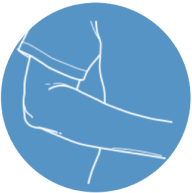
Flexed elbow
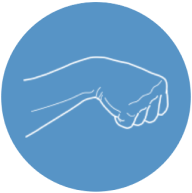
Flexed wrist
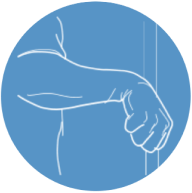
Pronated forearm
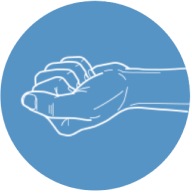
Clenched fist

Thumb-in-palm
Does this seem familiar?
Michael* is a 6-year-old with upper limb spasticity (not caused by cerebral palsy). See his story
*Images and fictionalized stories are for illustration purposes only. Not an actual patient.

XEOMIN for upper limb spasticity, excluding spasticity caused by cerebral palsy, in pediatrics

In children with upper limb spasticity, there is an imbalance of signals from the brain to the muscles, which causes stiffness and spasms. This can lead to abnormal arm or hand positions, uncomfortable movement, and pain.1

XEOMIN is injected into muscles to help interfere with these signals. This helps decrease muscle stiffness and improve your child’s ability to function using the affected muscles.2

Some stiffness and spasms may still occur, but in most patients less severely.
Images are for illustration purposes only. Individual results may vary.
XEOMIN helps improve upper limb spasticity symptoms
In clinical studies, XEOMIN improved muscle tone and resulted in functional
improvements 4 weeks after initiation of treatment2*
86%
Of patients treated at 8 Units/kg experienced a 1-point change or greater on the Ashworth Scale2
71%
Of patients treated at 2 Units/kg experienced a 1-point change or greater on the Ashworth Scale2
1.7
Mean improvement at Week 4 in GICS score for patients treated at 8 Units/kg2

XEOMIN provided sustained, long-term improvements in muscle tone for all upper limb muscle groups over 56 weeks (4 injection cycles)2†
*Functional improvement was measured using the Global Impression of Change Scale (GICS), a global measure of a patient’s functional improvement.
†Clinical patterns treated were flexed elbow, flexed wrist, forearm pronators, clenched fist, and thumb-in-palm over 4 injection cycles.
Does this seem familiar?
Michael* is a 6-year-old with upper limb spasticity (not caused by cerebral palsy). See his story
*Images and fictionalized stories are for illustration purposes only. Not an actual patient.

What is upper limb spasticity in pediatrics?

Affecting the arms, specifically the elbow, forearm, wrist, and hand muscles

Increase in muscle tension causing tightness, stiffness, or uncontrollable pull of muscles
Symptoms1,2
- Muscle stiffness (know as hypertonia)
- Muscles become overactive and tense
- Limited range of movement
- Difficulty moving
- Limitations in performing daily activities
- Reduced ability to relax muscles
- Muscle spasms
- Changes in limb position
- Pain
5 common patterns2

Flexed elbow

Flexed wrist

Pronated forearm

Clenched fist

Thumb-in-palm



